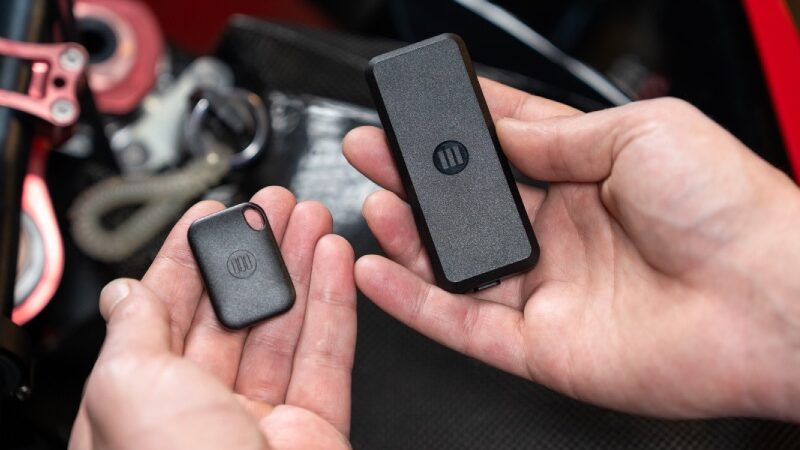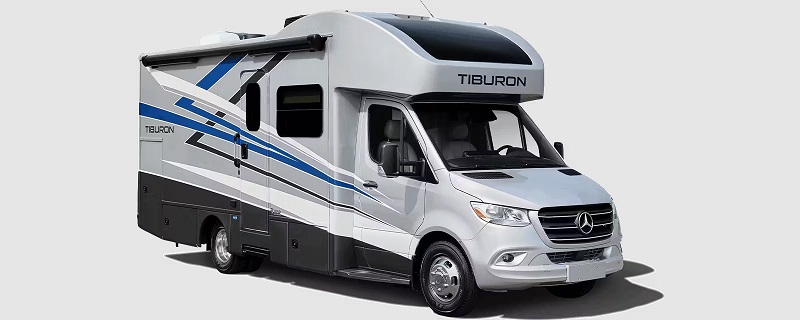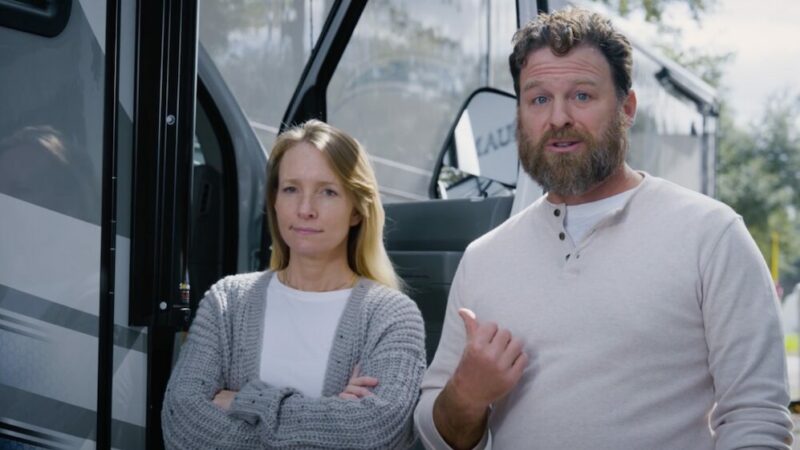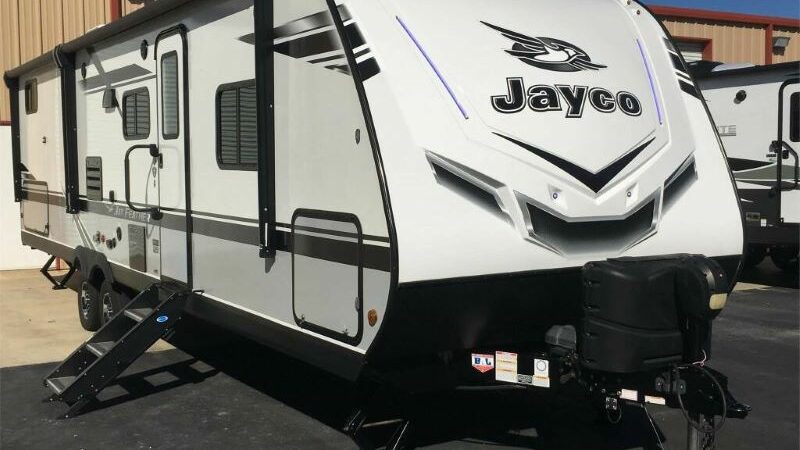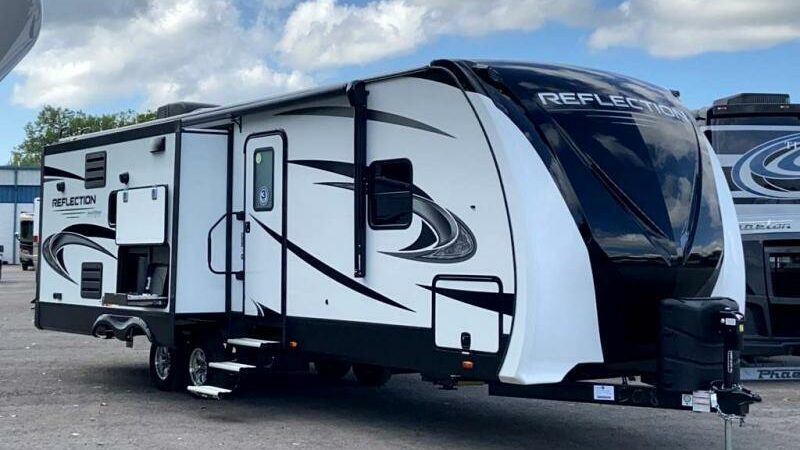RV Tail Swing & Turning Radius Explained
Thanks for your support! If you make a purchase using our links in this article, we may make a commission. And, as an Amazon Associate, I earn from qualifying purchases. See the full disclosure here.
One question we are often asked is – what is RV tail swing and turn radius? So, in this article, we will explain each of these in detail. And we discuss when and where RV tail swing and turn radius come into play when driving your rig.
RV tail swing is a simplified descriptor for the point of an RV that starts from the rear axle and runs to the very end of the RV. The reference applies to travel trailers and fifth wheels as well.
It’s slightly applicable to campervans as well, just not to the same degree, and for obvious reasons. This section of the motorhome is the part that swings directly opposite to the direction you are turning. As Isaac Newton once said, “For every action in nature, there is an equal and opposite reaction.”
Of course, motorhomes are not natural, but physics is more in line with Newton’s way of thinking, so it’s more than applicable here. The point is that RV tail swing and turning radius are serious factors you need to consider if you’ve never driven or towed an RV before. It’s an entirely different animal from a car or even a large truck or van.
Are Motorhomes Hard To Drive?
Motorhomes aren’t hard to drive; they’re just different to drive. Everything different requires a bit of time to acclimate. Some acquire the skills quickly and others take more time. Either way, driving a motorhome is a huge responsibility, and practice is necessary.
One of the best ways to do this is to find a vacant parking lot and get some time in with your motorhome. Sure, you’ll look a little silly doing donuts in the old K-Mart parking lot, but that’s okay. Donuts today will make a better driver tomorrow. And no, we don’t mean donuts with the accelerator mashed to the floorboard.
We’re referring to turning. Regardless of how fun doing wild donuts in a 12-ton motorhome sounds, it’s not even close to safe. The point of the endeavor is to get used to the RV tail swing. If you don’t, you’re liable to shove traffic around the next time you turn right at a stop light.
What Is RV Tail Swing?
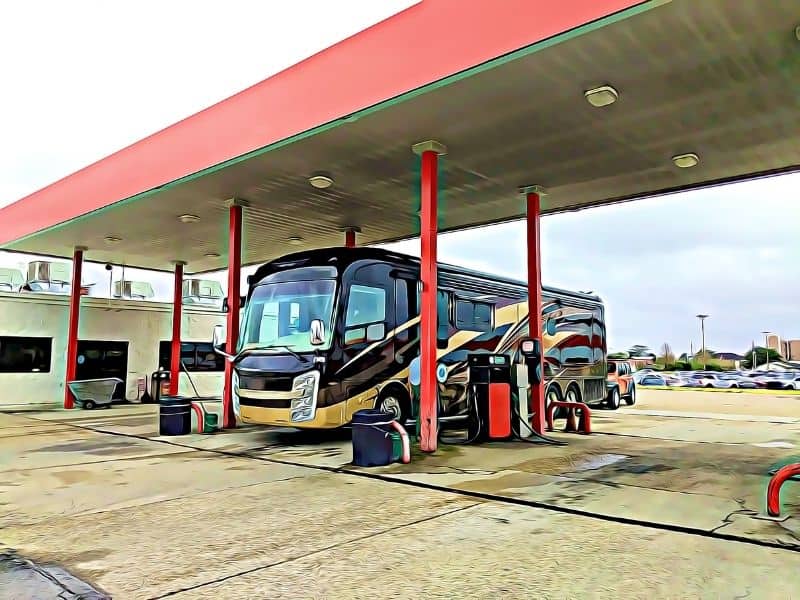
If you’ve never seen a One-wheel skateboard, you should look it up, since its simplistic design is exactly what you should think about to understand the dynamics of RV tail swing. A One-wheel skateboard is just that, a skateboard with a large, ball-wheel located in the center.
When the front of the skateboard moves left, the rear moves right in a matching angle and arc. A motorhome’s rear axle isn’t directly centered like the One-wheel, but the principle is the same. The rear axle is your “pivot point,” just like the ball in the One-wheel skateboard analogy.
Around this pivot point, all the action takes place. In a car, the pivot point and overall arc of the rear of the vehicle, as it relates to the front of the vehicle, is very small. When you turn right or left in a car, you never have to leave the lane you’re in to do so.
In a motorhome, however, the length of the RV is so long that you can’t engage the pivot point and begin turning in the same place as you would in a car. The pivot point has to move farther out before you can start your turn. Once you turn, the rear of the motorhome swings in the opposite direction of your turn. This is your RV tail swing.
How Do You Determine RV Tail Swing?
As the length is measured between the rear axle and the taillights on your motorhome, RV tail swing is more of an experience determination rather than a mathematical one. After all, you’re not going to hop out of your motorhome and take measurements of the street before you turn.
All you need to know is that this section of the motorhome sweeps outward when you turn. Having a good idea of this section’s length will help you determine when to start turning the wheel. Not being fully aware of your RV tail swing could result in making contact with a gas pump or another vehicle.
Now, let’s say your RV is stationary, with the front pointing north. If you spin the RV in place, 90° to the east, your rear will swing 90° to the west. In its new position, you can measure a perfect quarter-circle arc from the starting to the ending point.
Now, the real question is—how do you determine how far away from other objects you need to be, so your rear end doesn’t strike them as you turn?
The most common method is to measure the distance between the rear axle and the very back edge of your motorhome (overhang). Measure it in feet. When you’re done, divide that number by three. The resulting feet indicate how far you should be from other cars or obstacles (located on your sides) when turning.
Park in a straight line, to the right of a parallel line painted on the road or one you make. Cut the wheel all the way to the right. Move forward and mark the point where the tail swings out the farthest. Measure from the parallel painted line on the road to the tail swing point to get your RV tail swing distance.
What’s An RV’s Turning Radius?
The RV’s turning radius is the relationship between the rear wheels and the front wheels. When driving straight, the rear wheels travel along the same track as the front wheels. However, when you turn, the rear wheels no longer follow the same path as the front wheels.
This is known as “off-tracking,” and it dictates your turning radius. The distance between your front and rear axle is known as your wheelbase, which plays a role in the disparity between your rear wheel tracks and your front wheel tracks.
Another thing that plays a major role is your “wheel cut,” a fancy term for how sharp your wheels cut to the right or left.
Sound complicated? It’s not that bad, honestly. In fact, things are a lot simpler in practical terms than they are in paragraphs of information, angles, and measurements. When you combine the wheelbase, off-tracking, and wheel cut, you get the amount of room it takes to complete a turn—turning radius.
In simpler terms, the longer your motorhome, the larger your turning radius. Your turning radius is important when it comes to a simple, left or right-hand turn, just as much as it is for a full U-turn.
You need to know how much space you need to complete a turn or turn your motorhome around when need be. That knowledge will keep you out of a scrape. If you know you don’t have enough room to cut a U-turn, you won’t spend half the afternoon holding up traffic or causing an accident.
How Do You Determine An RV’s Turning Radius?
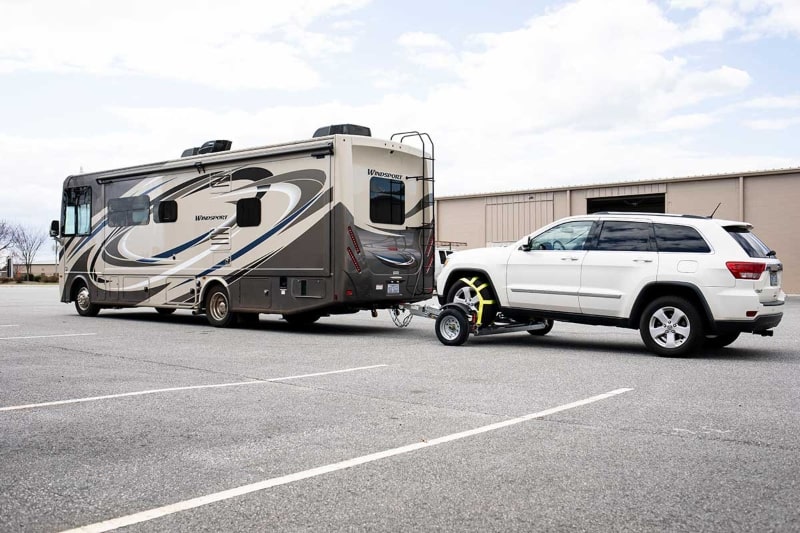
R = (WB) / tan (Θ). Yup, that’s the mathematical formula for determining your turn radius. “R” is the radius, “WB” is the wheelbase, and “Θ” is the turn angle. Now, you’re more than welcome to break out a pencil and paper, record those numbers, and work the equation.
For the hardcore mathematicians out there, RV tail swing and RV turn radius are probably goldmines of opportunities to delve into math and physics. However, for most of us, it boils down to just testing out the motorhome and maybe using a tape measure.
Real-world testing involves taking the motorhome for a spin at the end of a cul-de-sac or in a relatively empty parking lot. The math part is fun if you love math, but the numbers are nowhere near as consequential as getting a feel for your turning radius. The best way to do that is through practical application.
Locate a place where you have room for maneuvering a large motorhome. Make a full, complete U-turn (slow and deliberate) and measure from the motorhome’s exterior, opposite of the direction you’re turning. Not everyone can mentally gauge distance, whether it’s an eyesight or depth issue.
However, you can get an idea of how far you will travel from the start of your turn, until the point where the motorhome straightens out again.
Does A Class A RV Have a Larger Turning Radius Than A Class C?
Generally speaking, Class A motorhomes have a larger turning radius than Class Cs. Again, it all boils down to wheel cut and wheelbase. For the most part, the wheelbase of a Class A is longer than that of a Class C.
However, Class A motorhomes often have a stronger wheel cut, meaning they turn sharper than Class Cs. Depending on the motorhome, this is sometimes enough to make the turning radius of both very close.
The length of most Class Cs is anywhere between 20 and 28 feet. The length of a Class A has a larger disparity, between 25 and 45 feet. Longer motorhomes tend to have a larger wheelbase, for obvious reasons.
There are exceptions to the rule, such as some Class Cs that are longer than small Class As. The Gulf Stream 6320 is nearly 33 feet. The Coachmen Freelander 31MB is the same length as well.
The wheelbase on both of the above Class Cs is extensive. However, they often have a smaller RV tail swing because their overhang is still shorter than most Class As, including many of the smaller ones.
Another important factor to note is the weight and design of Class As. Class As weigh up to 30,000 lbs, while Class Cs weigh up to 12,000 lbs.
That extra weight on Class As frequently necessitates a tag axle, which extends the length of the wheelbase. The existence of a tag axle may contribute to the idea that it affects the turning radius and RV tail swing. The reality is, that the drive axle remains the pivot point when turning and the tag axle reduces the amount of overhang.
4 FAQs About RV Tails Swing & Turning Radius
1. How do you figure out RV tail swing?
To figure out RV tail swing in mathematical terms, measure the overhang of your RV (distance from the rear axle to the very back of your RV) and divide that number by three.
That’s how far out your tail will swing if you fully cut the wheel to the right or the left. You can also use a line on the road to physically measure the tail swing distance as you turn away from the line.
2. How do you figure out the turning radius?
You can figure out the turning radius of your RV with the equation, R = (WB) / tan (Θ). Or, you can physically measure the distance by making a complete U-turn in an empty parking lot. The latter is the more practical option and the one most RVers will use.
3. Will a Class A turn sharper than a Class C?
Most Class As turn sharper than Class Cs, because of the way they are designed. However, Class A often has a larger turning radius than Class C thanks to the wheelbase and overall length of the motorhome.
4. Can you change the tail swing or turning radius?
You can’t change either unless you go out and purchase a new RV. The wheelbase is the wheelbase and the tail swing is the RV tail swing from the day you drive it off the buyer’s lot. You can only practice driving to minimize the potential impact of both.
Final Thoughts About RV Tail Swing and Turning Radius
Driving a Class A or Class C motorhome is not a walk in the park. It takes time to learn the ins and outs of controlling and turning your motorhome without affecting anything else around you. Learning the turning radius and RV tail swing of your rig is something you should aim for right off the bat.
Not knowing the ins and outs of tail swing is how you end up shearing off a gas pump or scraping the side of a vehicle sitting next to you at a stop light. Driving Class As and Class Cs is a little intimidating at first. However, the more time you spend in one, the more comfortable you’ll become.
There are RVers out there with Class A motorhomes pulling travel trailer toy haulers. They didn’t get to the point where they could drive that rig overnight. Take your time, learn the ropes, and improve your and your family’s safety, along with everyone and everything around you.
Related Reading:
– 10 Tips For Driving A Motorhome In The Winter
– Best RV Suspension Upgrades For Motorhomes
– Is RV Driving School Worth The Money?
– Can You Sleep In An RV While Driving?
Thomas Godwin – Author and Part-Time RVer
Thomas Godwin is a full-time freelance writer with a BFA in Creative Writing, a U.S. Marine, and an avid outdoorsman.
Thomas’s love for RVing began at an early age spending time camping in the family vintage Airstream.
His background and education in writing, combined with his passion for the outdoors, can be seen in publications such as Camper Smarts and Vanlifers, as well as multiple animal and outdoor recreational publications.
When he’s not writing, he’s raising chickens and Appleyard ducks. Thomas also constructs teardrop campers (attempting to anyway) and kayaks the Blackwater River with his wife, two daughters, and his Dobermans.

Source: https://rvblogger.com/blog/rv-tail-swing-turning-radius-explained/


